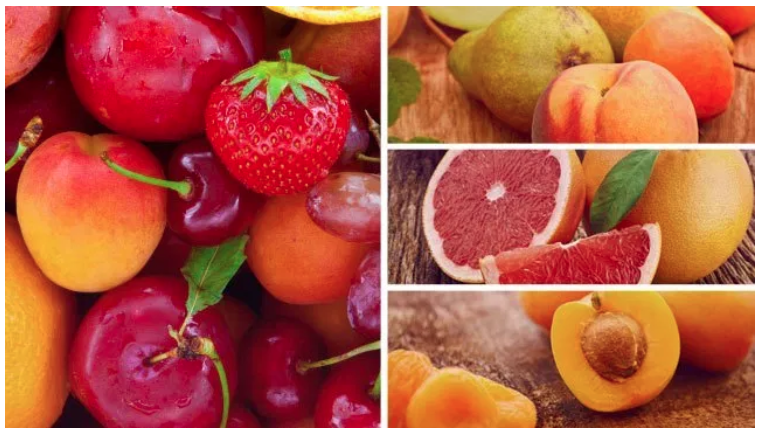Safer fruits for diabetes
We humans come by our sweet tooth naturally — Our bodies need carbohydrates because they provide energy to cells. But for the body to be able to use it for energy, we need insulin.
When our bodies don’t produce any insulin or are unable to use it (type 1 diabetes) or make enough of it properly (type 2 diabetes), we’re at risk for high blood sugar levels. High levels can lead to chronic complications such as nerve, eye, or kidney damage.
The glycemic index (GI) tells you how quickly foods containing carbohydrates affect your blood sugar level when eaten by themselves. According to the American Diabetes Association (ADA), GI scores are rated as:
- Low: 55 or below
- Moderate: 56 to 69
- High: 70 and above
The lower the GI score, the more slowly the rise in blood sugar, which can help the body better manage post-meal changes.
Most whole fruits have a low to moderate GI. Many fruits are also packed with vitamins A and C, as well as fiber.
A more useful estimation of the food-blood sugar effect is the glycemic load (GL), which has more narrow categories of low, medium and high foods. This calculation takes into account the GI, plus the grams of carbohydrates per serving of the food.
Though each person living with diabetes responds to or tolerates carbohydrate choices and amounts differently, GL better estimates the possible real-life impact when someone eats a particular food.
To calculate the GL yourself, use this equation: GL equals the GI, multiplied by the grams of carbohydrates, divided by 100.
- Low: 0 to 10
- Moderate: 11 to 19
- High: 20 and above
GI score: 20
GL score: 6
Cherries are high in potassium and packed with antioxidants, which will give your immune system a boost. Because cherries have a short growing season, it can be tough to get them fresh. However, canned tart cherries, which have a GI score of 41 and a GL of 6, are a fine substitute as long as they aren’t packed in sugar.
GI score: 25
GL score: 3
The mighty grapefruit packs in well over 100 percent of your recommended daily intake of vitamin C. Something to watch out for: Grapefruit affects how a number of prescription drugs work.
Check with your doctor about eating grapefruit or drinking grapefruit juice if you’re taking prescription medications.
GI score: 32
GL score: 9
Apricots bruise easily, so you sometimes can’t find the best fresh apricots. They get shipped while they’re still green to avoid bruising, but they don’t ripen well off the tree.
Dried apricots are a great alternative when eaten in small amounts. Because they’re dried, the amount of carbohydrates they provide is higher than the whole fruit. They have one-fourth of the daily copper requirement and are high in vitamins A and E. Try them with pork dishes, salads, or grains like couscous.
GI score: 38
GL score: 4
Enjoy the rich, subtle sweetness of pears, whether fresh or gently baked. They’re healthiest with the peel on, providing over 20 percent of your recommended daily fiber intake. Try this summery recipe for pear and pomegranate salad!
GI score: 39
GL score: 5
There’s a reason why apples are one of America’s favorite fruits. In addition to satisfying your need for crunch, one sweet-tart apple with the peel on provides nearly 20 percent of your daily fiber needs. Bonus — apples help to feed your healthy gut bacteria!
GI score: 40
GL score: 5
Oranges will boost your vitamin C. There’s plenty of healthy fiber in an orange, too. Substitute red blood oranges in this recipe for bright color and a new taste.
GI score: 40
GL score: 2 (GL score is 9 for prunes)
Plums bruise easily too, making them hard to get to market. You can enjoy the nutritional benefits of plums in their dried state as prunes, but be careful with portion size. Dried fruits have the water removed, and thus have more carbohydrates. Fresh plums have a GL score of 2, while prunes have a GL of 9.
GI score: 41
GL score: 3
Fun fact: One cup of strawberries has more vitamin C than an orange! There are many varieties of strawberry you can grow yourself in the warmer months. Enjoy them raw for a healthy serving of vitamin C, fiber, and antioxidants. You can also try them in a soy-based smoothie.
There’s even more good news: other berries have a low glycemic load too! Enjoy your blueberries, blackberries, and raspberries, which all are ranked low with 3s and 4s.
GI score: 42
GL score: 5
The average peach contains just 68 calories and is packed with 10 different vitamins, including A and C. They’re also a great addition to smoothies, whether they’re mixed with blueberries or mango!
GI score: 53
GL score: 5
Grapes, as with all fruits where you eat a lot of the skin, provide healthy fiber. Grapes are also a good source of vitamin B-6, which supports brain function and mood hormones.
Remember that GI and GL scores are general guides to help you choose foods. Checking your own blood sugar with a glucometer after snacks and meals is still the most individualized way to identify the best foods for your health and blood sugar.
___
https://www.healthline.com/health/diabetes/low-glycemic-fruits-for-diabetes

